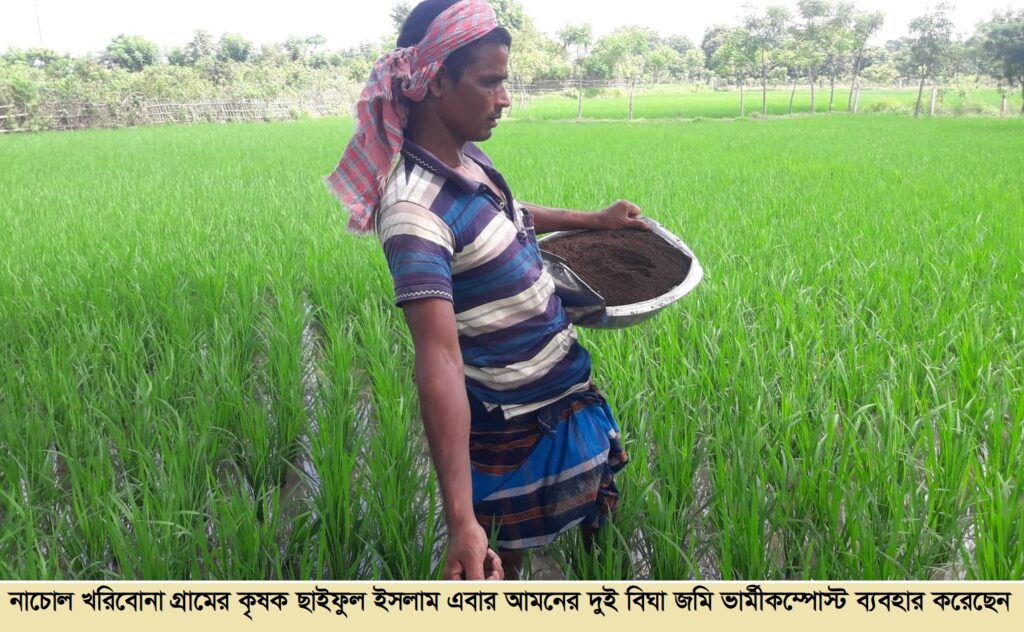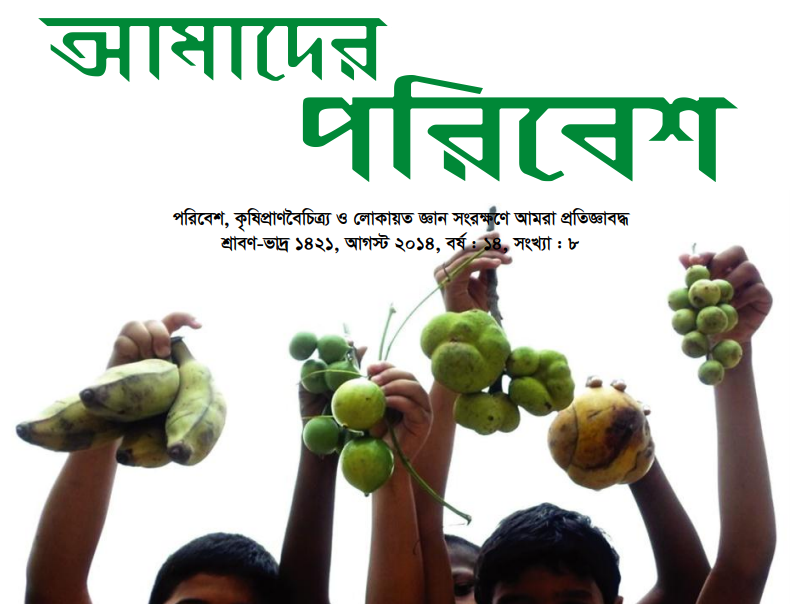Shahidul Islam from Barind region
Introduction
The northwestern region of Bangladesh is known as the drought-prone area. It has different characteristics compared to other regions of the country. Topographic diversity such as high and low plains, creeks, clay soils and climate variations make this region unique. This area, which has been suffering from water shortage for a long time, is now seeing the negative effects of global climate change more and more. The intense heat is increasing day by day with decreasing amount of rainfall. Even during the rainy season, the relative rainfall has decreased and the temperature has increased. According to the data of Rajshahi Meteorological Office, the average temperature is increasing by one degree Celsius every year in Barind region. As a result, people’s lives and biodiversity are in crisis. Since the 1960s, the use of high-yielding seeds, chemical pesticides, irrigation and modern technologies has increased the production cost of farmers and the country has to import these materials leaving farmers to depend on companies for these materials. But day by day due to global climate change disaster has increased in the country and at the same time when the crisis has increased due to war and global political reasons, there has been a crisis in various agricultural materials including fertilizer seeds, pesticides and hybrid seeds from outside. The price of every material has increased. Farmers are not able to match their production cost and the income they have after selling produces. On the one hand, the crisis has increased due to local disasters, war and global politics. In this critical period, the farmer is playing a role in overcoming the crisis by using their indigenous knowledge, experience and resources.
Bio-fertilizers combat drought and replace chemical fertilizer
Due to the ongoing economic crisis, increasing prices of imported agricultural inputs and non-availability of them, farmers are increasingly using locally available inputs instead of chemical pesticides in their production. Backyard manure is being used on land more than ever before. Many have increased their use by making organic fertilizers themselves. Farmers are making vermincompost and applying in their lands. According to the farmers, drought can also be easily dealt with by using this organic fertilizer. If you use organic fertilizers on vegetables or soil, they are juicy. Raihan Kabir Ranju, a self-educated agricultural researcher at the community level of BARCIK said. He said that the use of organic fertilizers among farmers has increased during this crisis. A data survey of Kharibona village of Nachol upazila, known as drought-prone Upper Barendra region, shows that farmers are suffering from shortage of chemical fertilizers in the current Aman season with the worst drought in history. This picture is seen not only in Nachol, but also in different areas of Barendra region. At this time the farmer is making use of his experience with the readily available natural resources around him. Locally, according to the information observed in Kharibona village of Nachol upazila, more than 1000 tons of cow dung, bio-fertilizer and vermincompost have been used in the current Aman season. Which is much more than before. Saiful Islam, a farmer of Kharibona village, said, “I have used 50 kg of vermincompost on 2 bigha land.’ He said, I will use more. The price of chemical fertilizers has increased all around, fertilizers are not available, so as an alternative, we have increased the use of organic fertilizers to produce our own. I am getting good results. The paddy plants are alive and well despite the lack of rain.’
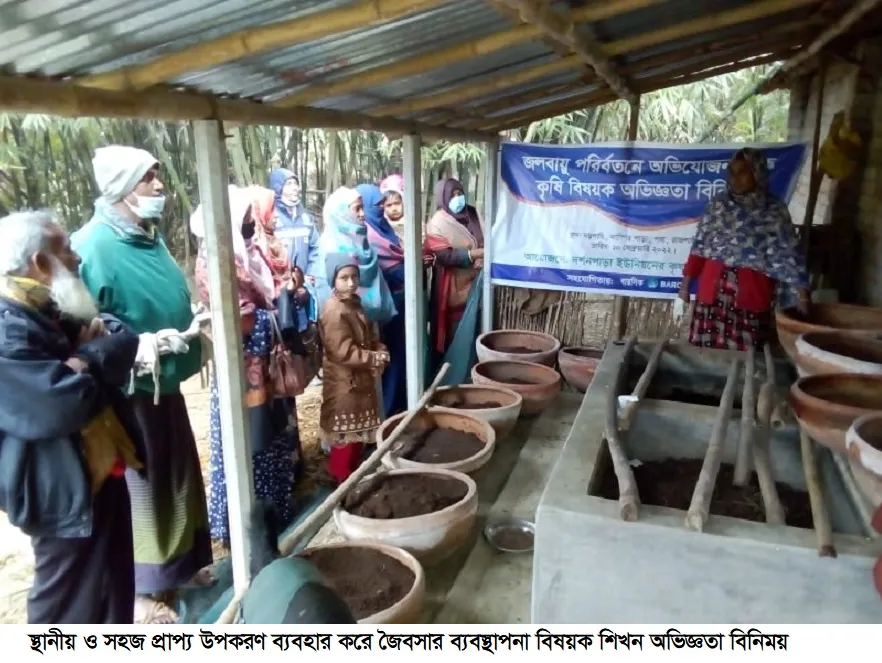
On the other hand, Afzal (45), a farmer of Tenturia Danga village of Poba upazila of Rajshahi, said, “The price of urea fertilizer has increased, potash is not available, and the price is high.” Earlier I used paush (dung manure) on half of the land, now I have used all the paush on the land due to this problem. He went on saying, ‘I have planted Aman paddy on eight bigha land. I have fertilized every land with dung.’ His wife Krishani Akalima (35) said, “Earlier I used to make Nonda (cooking Fuel) with dung at home, but this year I used the dung for making Paush.’ Farmer Afzal Hossain said, “As a result, it has been seen that the paddy of my land is healthy and there is no additional cost of chemical fertilizers. It seems beneficial to me.’ Jitendra Nath (55), a farmer of Gokul-Mathura village in Tanor upazila of Rajshahi, said, “This time we are trying to use our past experiences. I am getting good results. Just as the soil is juicy by giving organic fertilizers, the cost of crop production is reduced, and the environment is good too.’
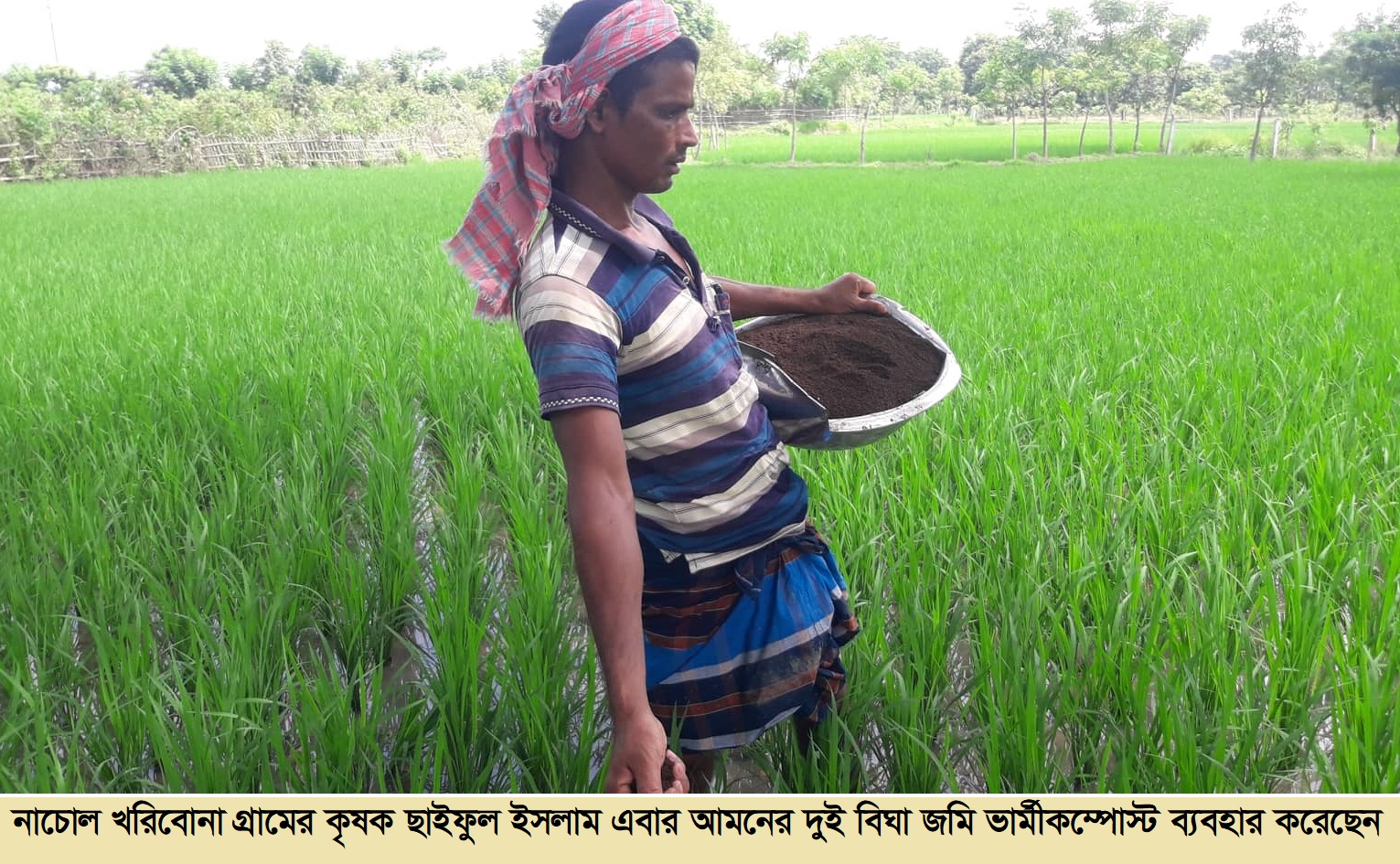
Through field observation and yard meetings with farmers, it is known that the use of organic fertilizers has increased among the farmers to deal with the ongoing drought and crisis in the villages of Barind region. Again, with the help of BARCIK, the production and marketing of organic manure from the producers has also increased as a result of exchanging learning and experience on the aspects of using local natural and available materials including making vermincompost. One such person, Bilkis Akhter (55) of Karigad Para village in Baragachi union of Poba upazila said, ‘I have sold vermincompost worth around fifty thousand taka in the last 45 days during this Aman season. During this period the demand for vermincompost has increased more than before.’
Local indigenous methods and mulching are being used to combat drought
Farmers of Barind region are using various indigenous and local methods to protect their fruit trees, crops and vegetable fields during the ongoing drought to retain soil moisture. Indigenous women use da jhoro (an indigenous method to water plants) method to protect vegetable and fruit trees in their homes. Da Jhoro is to pour water by making a hole in a bottle or an earthen vessel. As a result, water drips at the base of the plant, less water is needed and the base of the plant is juicy.
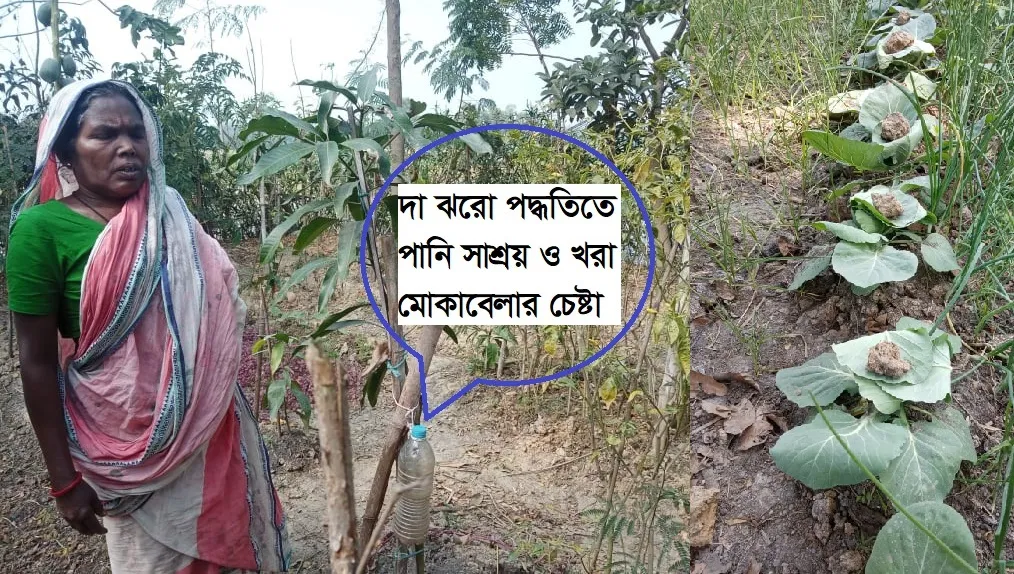
Again, farmers are using mulching to keep the soil moist by covering the base of the tree with creeper leaves, straw and leaves. As a result, the root of the tree remains juicy for a long time. Crops are saved from the drought. Abdul Jabbar (60), a farmer of Poba Upazila, said, “We cover the roots of the pulses/trees with leaves and even kachuri leaves to protect them from the scorching heat. As a result, the roots of the tree remain wet during this drought. The method is used more during drought.’
Conclusion
When people are in crisis due to various disasters, they are saved by the nature and wealth of their surroundings. We call learn that farmers continue to produce food by using their own seeds and fertilizers during the pandemic Covid-19 due to shortages of agricultural inputs felt all around world. And when the crops are getting destroyed due to drought and lack of rain, bio-fertilizer is saving the crops by using easily available materials around. At a time when agricultural inputs are in short supply due to global politics and war, the farmer is contributing to the country’s food production by utilizing their own resources and experiences. Therefore, public and private institutions should come forward to increase their support for farmers to enable farmers practicing nature-based environment-friendly production system.
Translated by Silvanus Lamin

